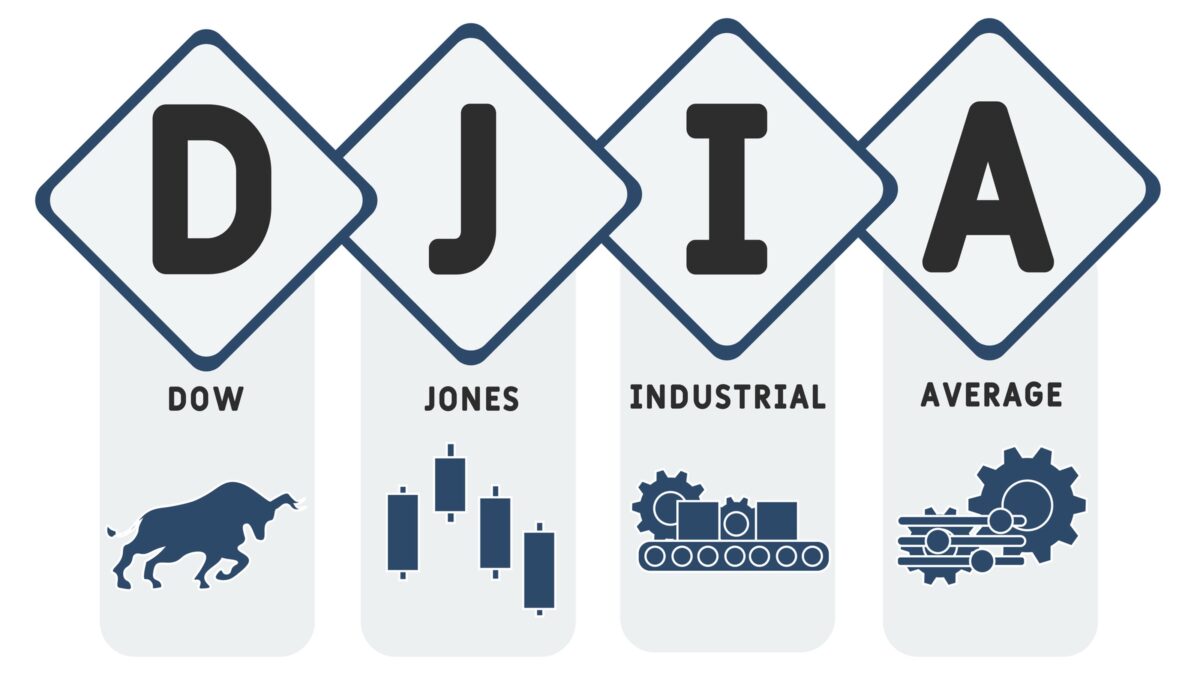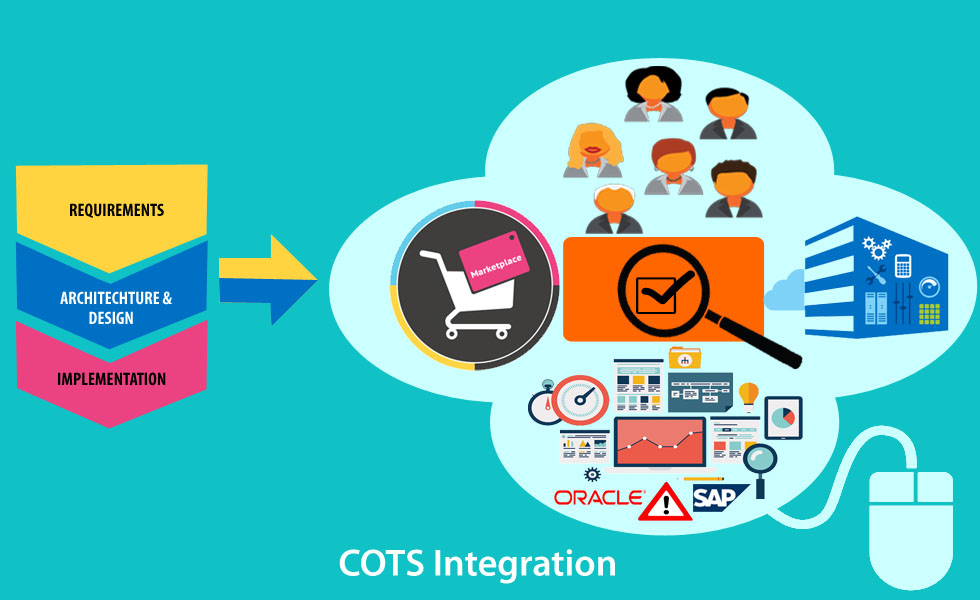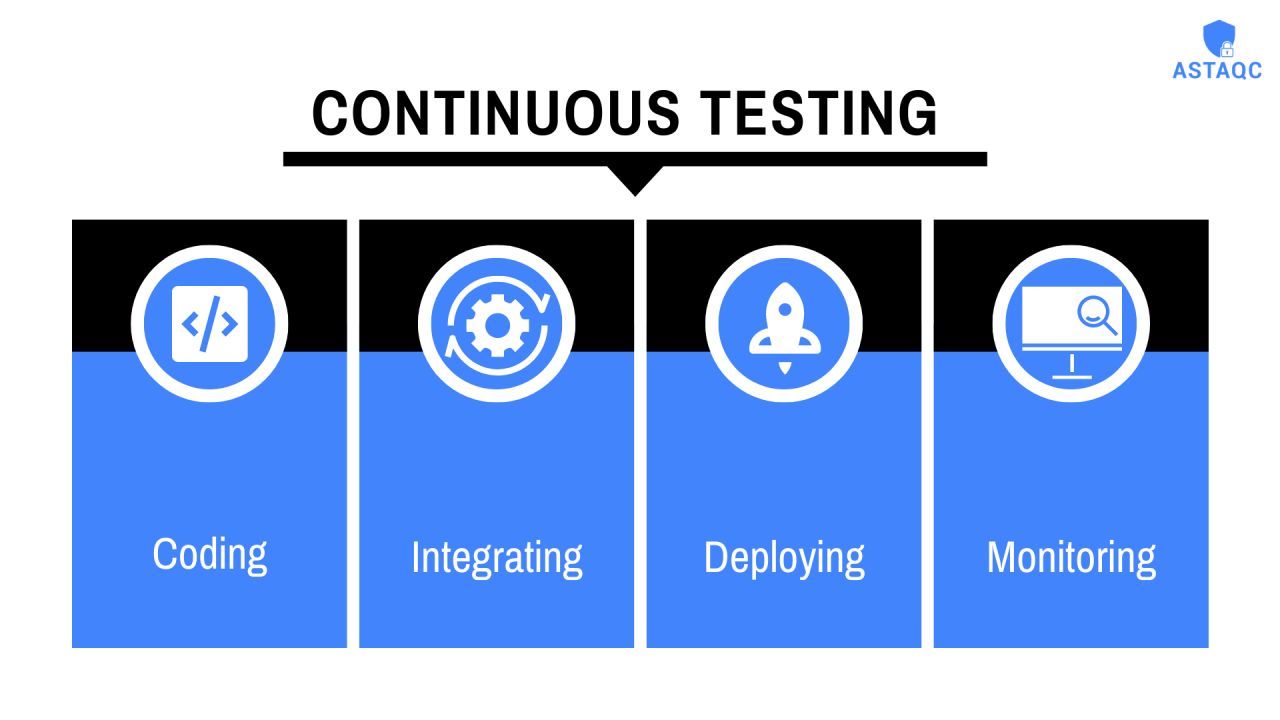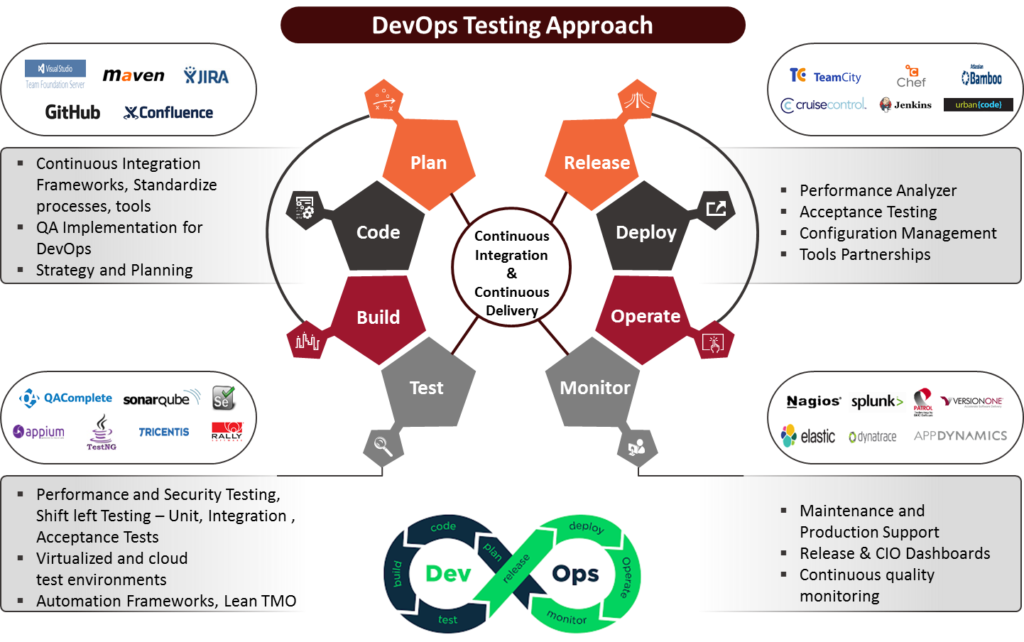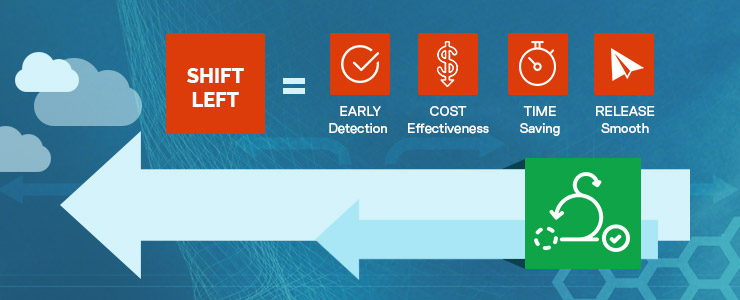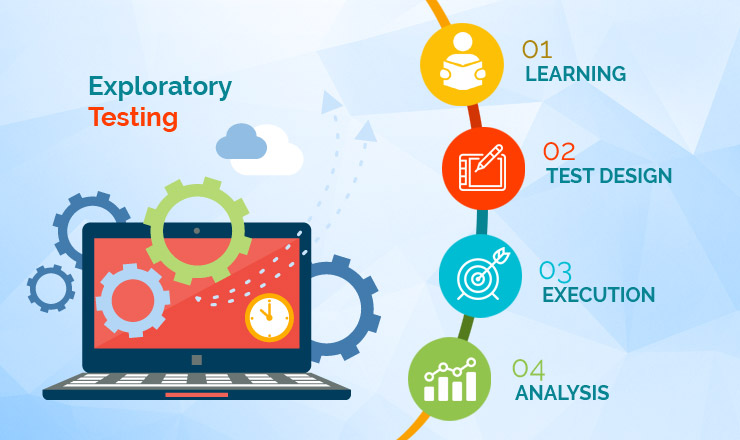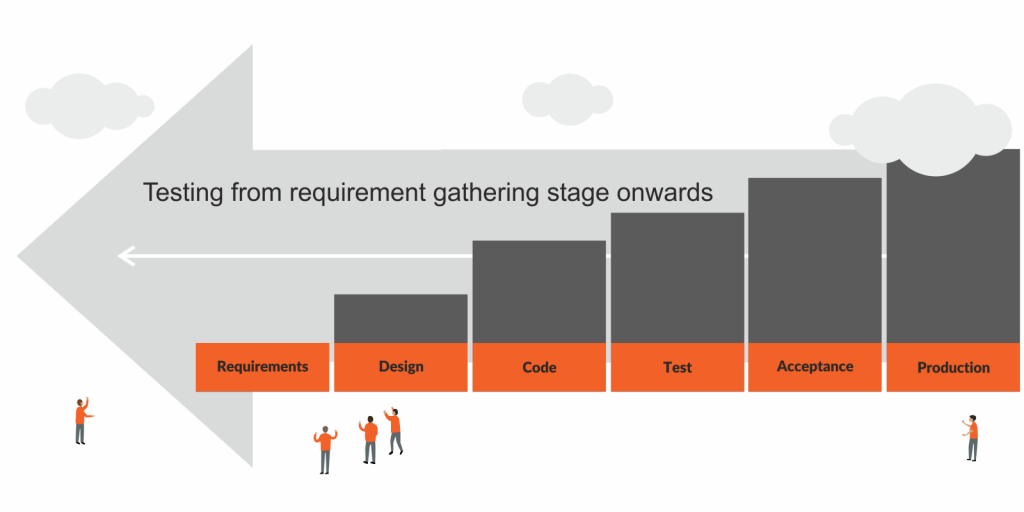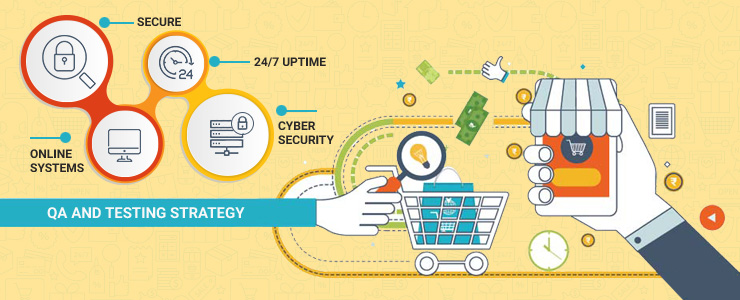The Dow Jones Industrial Average (DJIA), often referred to simply as the Dow, is a widely followed stock market index that reflects the performance of 30 major publicly traded companies in the United States. Investors, economists, and financial analysts frequently use the Dow as a benchmark to gauge the overall health and direction of the stock market. In this comprehensive guide, we will delve into the history, composition, calculation, and significance of the Dow Jones Industrial Average, addressing common questions and shedding light on its role in the financial world.
History of the Dow Jones Industrial Average:
-
When was the Dow Jones Industrial Average created?
The Dow Jones Industrial Average (DJIA) is a stock market index that tracks the performance of 30 large, publicly traded companies listed on the New York Stock Exchange (NYSE) and the Nasdaq. It is one of the oldest and most widely used stock market indexes in the world.
The Dow Jones Industrial Average was created on May 26, 1896, by Charles Dow, co-founder of Dow Jones & Company and The Wall Street Journal. The index was originally made up of 12 industrial companies, including General Electric, American Telephone and Telegraph, and Standard Oil.
Over the years, the composition of the DJIA has changed to reflect the changing American economy. Companies have been added and removed from the index, based on their market capitalization and their representative of a particular industry sector.
Today, the DJIA is still considered a leading indicator of the U.S. stock market. It is closely watched by investors and the media, and its performance is often used as a gauge of economic health.
Here are some of the key milestones in the history of the DJIA:
- 1896: The Dow Jones Industrial Average is created with 12 companies.
Image of Dow Jones Industrial Average was created with 12 companies.Opens in a new window
www.investopedia.com
Dow Jones Industrial Average was created with 12 companies. - 1929: The DJIA reaches its all-time high of 381.16 on September 3, just before the start of the Great Depression.
Image of DJIA reaches its alltime highOpens in a new window
finbiteinsights.substack.com
DJIA reaches its alltime high - 1932: The DJIA falls to its all-time low of 41.22 on July 8, during the Great Depression.
- 1972: The DJIA surpasses the 1,000 mark for the first time.
- 1987: The DJIA experiences its worst one-day percentage decline, falling 22.6% on Black Monday.
- 1995: The DJIA surpasses the 5,000 mark for the first time.
- 2008: The DJIA falls to its lowest closing level since 1995 during the financial crisis.
- 2020: The DJIA surpasses the 30,000 mark for the first time.
The Dow Jones Industrial Average is a valuable tool for investors and economists alike. It provides a snapshot of the performance of the U.S. stock market and can be used to track the health of the economy.
-
What was the initial purpose behind its creation?
The initial purpose behind the creation of the Dow Jones Industrial Average (DJIA) wasn’t as straightforward as some might think. While it eventually became a key indicator of the broader U.S. economy, Charles Dow’s original motives had a few layers:
1. Gauge the Market: At its core, Dow wanted to provide a simple and accessible measure of the overall activity within the U.S. stock market. By tracking the stock prices of a select group of prominent companies, he aimed to offer a more comprehensive picture than focusing on individual fluctuations.
2. Reflect Industrial Growth: The “Industrial” in the name wasn’t just a random descriptor. During the late 19th century, the American economy was experiencing rapid industrialization. Dow saw these sectors, like railroads and manufacturing, as driving forces shaping the nation’s economic vitality. He selected companies accordingly, hoping the DJIA would illustrate the strength and progress of American industry.
3. Inform Investment Decisions: While Dow wasn’t peddling a predictive theory, he believed the DJIA could offer valuable insights for investors. By observing patterns and trends in the index, individuals could potentially make informed decisions about buying and selling stocks. He saw it as a tool for understanding market sentiment and potential future trajectories.
4. Journalistic Utility: As co-founder of The Wall Street Journal, Dow also envisioned the DJIA as a compelling element for his publication. The index provided fresh content for market reports and analyses, engaging readers and adding depth to financial news coverage.
So, while the DJIA eventually evolved into a major economic indicator, its initial purpose was a multi-faceted blend of market measurement, industrial focus, investor guidance, and journalistic innovation.
-
How has the index evolved over the years?
The Dow Jones Industrial Average (DJIA) has undergone several significant evolutions over its 128-year history, reflecting the changing landscape of the American economy and the stock market itself. Here are some key aspects of its evolution:
Composition:
-
- Number of Companies: Originally launched with 12 companies, the DJIA expanded to 20 in 1916 and finally settled at 30 in 1928, the structure it maintains today.
-
- Industry Representation: Initially focused on heavy industry giants like railroads and steel mills, the composition has shifted to encompass a wider range of sectors, including technology, finance, and healthcare, reflecting the changing economic landscape.
-
- Company Changes: Many companies have been added and removed from the DJIA over the years, based on factors like market capitalization, industry representation, and financial performance. Notably, General Electric, the only remaining original member, was removed in 2018.
Methodology:
-
- Calculation Method: The DJIA originally used a simple average of the included companies’ stock prices. However, since 1928, it has employed a divisor that adjusts for stock splits and issuances, resulting in a more accurate representation of overall performance.
-
- Focus: While initially intended to gauge industrial activity, the DJIA has become a broader indicator of the U.S. stock market and, to some extent, the overall economy.
Technology and Accessibility:
-
- Trading platforms: From manual calculations and telegraph communication, the DJIA’s tracking and analysis have become vastly more efficient and accessible thanks to electronic trading platforms and real-time data availability.
-
- Public Access: Information about the DJIA and its performance is readily available to the public through media outlets, financial websites, and mobile apps, democratizing access to market information.
Historical Milestones:
-
- Stock Market Crashes: The DJIA has navigated numerous booms and busts, including the Black Monday crash of 1987 and the 2008 financial crisis, serving as a historical marker of economic turbulence.
- Milestones: Reaching key point levels like 1,000, 10,000, and 30,000 have been celebrated as symbolic markers of market growth and economic prosperity.
Components of the Dow Jones Industrial Average:
-
How are the 30 companies selected for inclusion?
The selection of companies for the Dow Jones Industrial Average (DJIA) is a carefully conducted process, guided by specific criteria and overseen by a dedicated committee. Here’s a breakdown of the key factors and processes involved:
Selection Criteria:
Market Capitalization: While not the sole determinant, large market capitalization signifies a company’s size and influence within the US economy.
Liquidity: The stock must be highly liquid, meaning there are sufficient buyers and sellers readily available to ensure smooth trading.
Industry Representation: The committee aims to maintain a diversified index across various sectors, aiming to reflect the breadth of the US economy.
Financial Performance: Strong financials, including consistent profitability and growth potential, are desirable for inclusion.
Leadership and Innovation: Companies considered should be industry leaders known for innovation and a positive reputation.
Global Recognition: Global reach and brand recognition can also factor into the selection process.Selection Process:
Review and Analysis: The committee, composed of senior editors from The Wall Street Journal and S&P Dow Jones Indices, regularly reviews potential candidates based on the above criteria.
Qualitative Assessment: Beyond quantitative metrics, the committee conducts qualitative assessments considering factors like a company’s long-term prospects, corporate governance, and overall contribution to the index’s composition.
Voting and Announcement: The committee votes on potential additions and removals, with a two-thirds majority required for any change. Once finalized, changes are announced publicly and implemented on a designated date.
Factors to Consider:Subjectivity: Unlike some other indices, the Dow Jones Industrial Average relies on a committee’s subjective judgment while incorporating quantitative data. This can lead to debate and criticism about the inclusion or exclusion of specific companies.
Price-Weighted vs. Market-Weighted: The Dow Jones Industrial Average uses a price-weighted method, meaning companies with higher stock prices have a greater influence on the index’s value. This differs from other popular indices like the S&P 500, which are market-weighted based on total market capitalization.
Limited Scope: With only 30 companies, the Dow Jones Industrial Average offers a more concentrated view compared to broader indices. This can be both an advantage for focusing on prominent companies and a disadvantage for potentially overlooking emerging sectors or smaller businesses.
In summary, the selection of companies for the Dow Jones Industrial Average is a well-defined process balancing quantitative and qualitative factors to maintain a diversified and representative index reflecting the leading lights of the US economy. While subjectivity and methodological choices come into play, the DJIA remains a widely used and valuable indicator for investors and market observers.
- What criteria do companies need to meet to be part of the Dow?
To be part of the prestigious Dow Jones Industrial Average (DJIA), companies need to meet a set of key criteria, both quantitative and qualitative:
Quantitative Factors:
-
- Market Capitalization: While not the sole determinant, high market capitalization indicates a company’s size and economic impact. The DJIA typically favors larger companies with market caps in the billions or tens of billions of dollars.
-
- Liquidity: The stock must be highly liquid, meaning there are sufficient buyers and sellers readily available to ensure smooth trading without significant price fluctuations. This minimizes issues with tracking the index’s value.
-
- Industry Representation: The committee strives for a diversified index across various sectors like technology, finance, healthcare, and consumer goods. Ideally, the included companies should collectively represent a cross-section of the US economy.
Qualitative Factors:
-
- Financial Performance: Strong financials, including consistent profitability and a history of steady growth, are crucial for demonstrating a company’s stability and resilience.
-
- Leadership and Innovation: Being an industry leader known for innovation and technological advancements contributes to the overall reputation and influence of the DJIA.
-
- Global Recognition: Companies with strong global presence and brand recognition add further prestige and international relevance to the index.
-
- Corporate Governance: Sound corporate governance practices, emphasizing transparency, ethical conduct, and shareholder accountability, are highly valued by the committee.
Additional Points:
-
- Subjectivity: Unlike some purely quantitative indices, the Dow selection process involves the committee’s subjective judgment within the established criteria. This can lead to some debate and criticism regarding specific company inclusions or exclusions.
-
- Price-Weighted vs. Market-Weighted: The Dow uses a price-weighted method, meaning companies with higher stock prices have a greater impact on the index’s value. This differs from market-weighted indices like the S&P 500, which consider total market capitalization.
-
- Limited Scope: With only 30 companies, the Dow offers a more concentrated view compared to broader indices. This can be an advantage for focusing on prominent players but also a disadvantage for overlooking emerging sectors or smaller businesses.
Overall, companies wishing to join the Dow need to be large, liquid, financially sound, innovative leaders in their respective sectors, and globally recognized with strong corporate governance practices. The selection process combines quantitative and qualitative assessments to maintain a diversified and prestigious index reflecting the top businesses in the US economy.
-
- How often does the composition of the Dow change?
The composition of the Dow Jones Industrial Average (DJIA) doesn’t have a set frequency for changes. Instead, it undergoes adjustments when deemed necessary by the S&P Dow Jones Indices, the organization responsible for managing the index. There isn’t a fixed schedule or predetermined number of changes per year.
The committee overseeing the DJIA constantly monitors the companies included and potential candidates for addition or removal, considering factors like:
-
- Market capitalization: Changes in company size and importance within the economy.
-
- Liquidity: Shifts in trading volume and ease of buying and selling the stock.
-
- Industry representation: Maintaining a diversified mix of sectors in the index.
-
- Financial performance: Changes in profitability, growth, and overall financial health.
-
- Leadership and innovation: Keeping the index composed of industry leaders at the forefront of their sectors.
-
- Global recognition: Reflecting companies with significant international presence and brand awareness.
When enough evidence accumulates suggesting a change is needed to better reflect the current economic landscape, the committee convenes and votes on proposed additions or removals. A two-thirds majority vote is required for any change to be implemented.
Here are some historical trends regarding the frequency of changes:
-
- Historically: The DJIA has seen its composition change 57 times since its inception in 1896. This translates to an average of roughly one change every two years.
-
- Recent years: The pace of change has varied in recent years. For example, there were no changes between 2015 and 2017, while 2020 saw two changes and 2021 saw one.
The composition of the Dow Jones Industrial Average is dynamic and adjusts to reflect the evolving economic landscape. While there is no set schedule for changes, the S&P Dow Jones Indices committee carefully monitors and makes adjustments when necessary to maintain the index’s relevance and accuracy as a leading indicator of the US stock market.
-
-
Calculation Methodology:
Dow Divisor: This is a numerical value used to adjust for stock splits, dividends, and other changes that could distort the index value if not accounted for. It’s constantly updated to maintain historical continuity.
What is the formula used to calculate the Dow?
Formula:
The Dow Jones Industrial Average (DJIA) uses a price-weighted methodology. This means the index value is calculated by summing the share prices of the 30 companies included and then dividing by a divisor. While it may seem simple, understanding the nuances is crucial.
Here’s the formula:
DJIA = (Σ Price per Share of Included Companies) / Dow Divisor
Key aspects of the formula:
-
- Price per Share: The current stock price of each company in the DJIA is used.
-
- Σ: This symbol represents the sum, meaning the prices of all 30 companies are added together.
Simple Calculation: The price-weighted approach is relatively simple to calculate compared to market-cap weighting, which requires calculations of total market capitalization for each company.Why is it a price-weighted index and not a market-cap-weighted index?
Price-Weighted vs. Market-Cap-Weighted:The choice of a price-weighted method differentiates the Dow from other popular indices like the S&P 500, which use market capitalization (market cap) as their weighting factor.
-
- Price-Weighted: In the Dow, companies with higher stock prices have a greater impact on the index value, regardless of their overall market size. This means a company with a much higher market cap but a lower stock price could have less influence than a company with a smaller market cap but a higher stock price.
-
- Market-Cap-Weighted: In contrast, market-cap-weighted indices like the S&P 500 take into account the total market value of each company’s outstanding shares. This means larger companies based on market size have a greater influence on the index value, reflecting their greater economic impact.
Reasons for Price-Weighted Methodology:The Dow’s choice of price-weighted methodology has historical roots and some specific advantages:
-
- Historical Continuity: The Dow was originally calculated with a simple average of included company prices. The current divisor-based method maintains historical continuity while adjusting for stock splits and dividends.
-
- Focus on Large, Established Companies: Price-weighted methodology tends to give more weight to companies with higher stock prices, often signifying larger, established businesses with longer track records.Impact of Stock Splits and Dividends:
-
- Σ: This symbol represents the sum, meaning the prices of all 30 companies are added together.
Both stock splits and dividends can affect the Dow’s calculation:
-
- Stock Splits: When a company undergoes a stock split, the number of outstanding shares increases, while the individual share price decreases proportionally. To maintain historical continuity, the Dow Divisor is adjusted after a stock split to ensure the index value doesn’t artificially spike or dip due to the change in share price alone.
-
- Dividends: When companies pay dividends, the share price typically decreases on the ex-dividend date. The Dow Divisor is not adjusted for dividends, so the index value may slightly decrease after dividend payments.
By understanding the formula, weighting methodology, and factors like stock splits and dividends, you can gain a deeper appreciation for the complexities involved in calculating the Dow Jones Industrial Average.
Significance and Usage:
- Why is the Dow considered a leading indicator of the stock market’s health?
Why Leading Indicator?
The Dow Jones Industrial Average (DJIA) is considered a leading indicator of the U.S. stock market’s health for several reasons:
-
- Composition: The index includes 30 of the largest and most prominent publicly traded companies in the U.S., representing various sectors like finance, technology, and healthcare. Strong performance of these companies often reflects an overall positive trajectory of the economy and market.
-
- Psychological Significance: The Dow is widely watched by investors, media, and the general public. Its performance is often seen as a barometer of public confidence and overall economic sentiment. Investor reactions to its movements can further influence market trends.
-
- Historical Trend: Over its long history, the Dow has generally tracked the ups and downs of the broader market. While not always perfectly correlated, there has been a statistically significant relationship between Dow movements and overall market trends.
-
- How is the Dow used by investors and analysts in their decision-making?
How Investors and Analysts Use the Dow:
Investors and analysts utilize the Dow in various ways for their decision-making:
-
- Gauging Market Sentiment: Tracking the Dow’s movements helps assess investor sentiment and overall market confidence. Rising Dow reflects positive sentiment, while a falling Dow may indicate concerns or bearishness. This information can guide decisions about buying, selling, or holding specific stocks.
-
- Identifying Trends and Patterns: Analysts study historical and current Dow trends to identify potential market patterns and future trajectories. This analysis can inform investment strategies and portfolio adjustments.
-
- Benchmarks and Comparisons: The Dow serves as a benchmark for individual stock performance. Investors can compare the performance of specific companies to the Dow’s overall movement to assess their relative strengths or weaknesses.
-
- Are there any limitations to relying solely on the Dow for market analysis?Limitations of Sole Reliance:
While valuable, relying solely on the Dow for market analysis has limitations:
-
- Limited Scope: With only 30 companies, the Dow doesn’t represent the entire market. Missing out on smaller companies or emerging sectors can lead to incomplete information and potentially missed investment opportunities.
-
- Price-Weighted vs. Market-Cap-Weighted: The Dow’s price-weighted methodology gives more weight to companies with higher share prices, not necessarily reflecting their overall market size or economic impact. This can skew the indicator’s performance from the broader market’s true health.
- Psychological Influence: The Dow’s significance can create self-fulfilling prophecies. Investor behavior based solely on its movements can amplify market swings, causing volatility and potentially inaccurate signals.
Notable Historical Events and Market Movements:
- How has the Dow reacted to major economic events throughout history?
The Dow and the Echoes of History:
The Dow Jones Industrial Average (DJIA) has witnessed and reacted to numerous major economic events throughout history, offering fascinating insights into the interplay between market movement and societal context. Here are a few notable examples:
-
- The Great Depression (1929-1933): Following the Black Thursday crash in 1929, the Dow plummeted over 89% from its peak, reflecting the broader economic devastation.
-
- World Wars: While initially dropping, the Dow rebounded during both World Wars as government wartime spending boosted certain sectors.
-
- Oil Crisis (1973): The quadrupling of oil prices triggered a significant economic downturn, causing the Dow to decline by over 45%.
-
- Tech Bubble and Bust (1995-2002): Fueled by exuberant expectations for the internet, the Dow climbed sharply before crashing by over 78% following the bubble’s burst.
- Great Recession (2007-2009): The financial crisis and ensuing recession led to a devastating Dow plunge exceeding 50%.
-
- Are there instances where the Dow provided false signals about the market?
False Signals and Market Volatility:
There have been instances where the Dow’s movements didn’t accurately reflect the broader market health, highlighting its limitations as a single indicator:
-
- Short-Term Fluctuations: Day-to-day or even week-to-week Dow movements may not necessarily signal long-term economic trends, potentially creating false signals for investors.
-
- Psychological Influence: Investor confidence and sentiment can disproportionately impact the Dow, leading to volatile swings that may not align with the true state of the economy.
- Limited Scope: As discussed previously, the Dow’s focus on 30 large companies can miss out on broader market trends and emerging sectors, providing incomplete information.
-
- How has the Dow reacted to major economic events throughout history?
-
Criticism and Controversies:
-
-
- What criticisms have been leveled against the Dow Jones Industrial Average? The Dow has faced various criticisms regarding its representativeness and relevance:
-
- Price-Weighted Methodology: Some argue that the price-weighted method gives undue influence to companies with high stock prices, regardless of their market capitalization or economic impact.
-
- Limited Composition: With only 30 companies, the Dow doesn’t reflect the diversity of the entire U.S. stock market, potentially overlooking smaller businesses and emerging sectors.
- Lack of Transparency: The process of adding or removing companies from the Dow is not entirely transparent, leading to concerns about potential bias or arbitrariness.
-
- How do experts address concerns about its representativeness and relevance? Addressing Concerns and Moving Forward:
Experts acknowledge these limitations and actively address them through various methods:
-
- Complementary Indicators: Using the Dow alongside other market indices, economic data, and research insights provides a more nuanced picture than relying solely on the Dow.
-
- Market-Cap-Weighted Alternatives: Indices like the S&P 500, which use market capitalization for weighting, offer a broader and more diversified perspective on the market.
-
- Transparency Efforts: The S&P Dow Jones Indices committee, responsible for managing the Dow, has taken steps to increase transparency around selection processes and address concerns.
The Dow Jones Industrial Average, despite its limitations, remains a valuable historical and cultural touchstone for the U.S. stock market. Understanding its reactions to past events and acknowledging its criticisms are crucial for interpreting its movements and using it effectively alongside other tools for informed investment decisions.
-
- What criticisms have been leveled against the Dow Jones Industrial Average? The Dow has faced various criticisms regarding its representativeness and relevance:
-
Dow Jones vs. Other Market Indices:
-
-
- How does the Dow compare to other major indices like the S&P 500 and NASDAQ? Comparing the Titans: Dow vs. Other Market Indices
The Dow Jones Industrial Average (DJIA) shares the stage with other prominent market indices, each offering distinct insights into the U.S. stock market. Here’s a comparison with two major players:
S&P 500:
-
- Composition: 500 large, publicly traded companies across various sectors, providing a broader and more diversified view of the market.
-
- Weighting: Market-capitalization weighted, meaning larger companies have a greater influence on the index value.
-
- Performance: Generally exhibits less volatility compared to the Dow due to its broader composition.
-
- Suitability: Ideal for investors seeking exposure to a wider range of sectors and companies in the U.S. market.
NASDAQ:
-
- Composition: Primarily focused on technology and tech-related companies, capturing the dynamism of the tech sector.
-
- Weighting: Market-capitalization weighted, similar to the S&P 500.
-
- Performance: Historically known for higher volatility compared to the Dow and S&P 500 due to its concentration in tech stocks.
-
- Suitability: Suitable for investors interested in gaining exposure to the high-growth potential of the tech sector.
- Are there scenarios where different indices give conflicting signals?
Conflicting Signals:
Yes, scenarios can arise where different indices may send conflicting signals:
-
- Sector Specificity: The Dow, with its limited sectoral scope, might react differently to specific events impacting particular sectors, while the S&P 500 or NASDAQ, with broader coverage, might show a more muted response.
- Short-Term Fluctuations: Day-to-day movements of any index may not necessarily align with the broader market trend, creating temporary discrepancies between indicators.
-
- How does the Dow compare to other major indices like the S&P 500 and NASDAQ? Comparing the Titans: Dow vs. Other Market Indices
-
Investing Strategies Using the Dow:
-
-
- Can investors use the Dow to inform their investment decisions?
Investing Strategies with the Dow:
While the Dow has limitations, it can still inform investment decisions:
-
- Market Sentiment: Tracking the Dow’s movements helps gauge overall investor confidence and market sentiment. Rising Dow reflects positive sentiment, potentially prompting investment in large-cap, blue-chip stocks.
-
- Benchmarking: Comparing individual stock performance to the Dow’s movement can offer insights into relative strength or weakness.
- Trend Analysis: Analyzing historical and current Dow trends can help identify potential future market movements and adjust investment strategies accordingly.
-
- Are there specific trading strategies tailored to the Dow’s movements?
Comparing the Titans: Dow vs. Other Market Indices
The Dow Jones Industrial Average (DJIA) shares the stage with other prominent market indices, each offering distinct insights into the U.S. stock market. Here’s a comparison with two major players:
S&P 500:
-
- Composition: 500 large, publicly traded companies across various sectors, providing a broader and more diversified view of the market.
-
- Weighting: Market-capitalization weighted, meaning larger companies have a greater influence on the index value.
-
- Performance: Generally exhibits less volatility compared to the Dow due to its broader composition.
-
- Suitability: Ideal for investors seeking exposure to a wider range of sectors and companies in the U.S. market.
NASDAQ:
-
- Composition: Primarily focused on technology and tech-related companies, capturing the dynamism of the tech sector.
-
- Weighting: Market-capitalization weighted, similar to the S&P 500.
-
- Performance: Historically known for higher volatility compared to the Dow and S&P 500 due to its concentration in tech stocks.
-
- Suitability: Suitable for investors interested in gaining exposure to the high-growth potential of the tech sector.
Conflicting Signals:
Yes, scenarios can arise where different indices may send conflicting signals:
-
- Sector Specificity: The Dow, with its limited sectoral scope, might react differently to specific events impacting particular sectors, while the S&P 500 or NASDAQ, with broader coverage, might show a more muted response.
-
- Short-Term Fluctuations: Day-to-day movements of any index may not necessarily align with the broader market trend, creating temporary discrepancies between indicators.
Investing Strategies with the Dow:
While the Dow has limitations, it can still inform investment decisions:
-
- Market Sentiment: Tracking the Dow’s movements helps gauge overall investor confidence and market sentiment. Rising Dow reflects positive sentiment, potentially prompting investment in large-cap, blue-chip stocks.
-
- Benchmarking: Comparing individual stock performance to the Dow’s movement can offer insights into relative strength or weakness.
-
- Trend Analysis: Analyzing historical and current Dow trends can help identify potential future market movements and adjust investment strategies accordingly.
Specific Trading Strategies:
Several trading strategies utilize the Dow, with varying risk levels and complexity:
-
- Trend Following: Investing in line with the Dow’s general upward or downward trend through long or short positions.
-
- Momentum Trading: Capitalizing on short-term momentum swings within the Dow.
-
- Sector Rotation: Shifting investments between sectors based on their relative performance compared to the Dow.
Remember: No strategy guarantees success, and careful research and risk management are crucial for any investment approach. The Dow can be a valuable tool, but it’s essential to combine its insights with other data, analysis, and a clear investment strategy.
-
- Can investors use the Dow to inform their investment decisions?
-
Recent Trends and Future Outlook:
-
- What trends or patterns have characterized the Dow’s recent performance?
Dow Jones Industrial Average: Recent Trends and Future Outlook
Analyzing Recent Performance:
The Dow Jones Industrial Average (DJIA) has demonstrated various notable trends in its recent performance:
-
- Volatility: 2023 saw substantial volatility in the Dow, influenced by factors like rising interest rates, inflation concerns, and geopolitical tensions. The index experienced both significant gains and losses throughout the year.
-
- Sector Rotation: Investors shifted funds between sectors based on perceived risk and reward potential. Sectors like technology and consumer staples faced temporary setbacks, while others like energy and financials witnessed rebounds.
- Record Highs: Despite the volatility, the Dow briefly touched record highs in early 2023, fueled by optimism about strong earnings reports and economic resilience.
-
- Are there predictions or speculations about the future direction of the Dow?
Looking into the Future:
Predicting the future direction of the Dow with certainty is impossible, but several factors may influence its upcoming performance:
-
- Federal Reserve Policy: The Federal Reserve’s decisions regarding interest rates and quantitative easing will likely remain a key driver of the market. Continued rate hikes could put downward pressure on the Dow, while a more dovish stance might be interpreted positively.
-
- Global Economic Landscape: Geopolitical tensions, supply chain disruptions, and the overall global economic climate will play a role in investor confidence and market movements.
-
- Corporate Earnings: The performance of individual companies within the Dow and their earnings reports will continue to impact the index’s value.
Speculations and Expert Opinions:
Financial analysts and experts offer various outlooks for the Dow’s future:
-
- Bullish Predictions: Some believe the Dow might see continued upward momentum based on strong corporate earnings, potential de-escalation of global tensions, and accommodative policies from the Fed.
-
- Bearish Forecasts: Others warn of potential downward pressure due to inflation concerns, slowing economic growth, and further interest rate hikes.
- Cautious Optimism: Many experts advocate for a cautious approach, emphasizing the need to closely monitor evolving economic and geopolitical factors before making predictions.
-
- What trends or patterns have characterized the Dow’s recent performance?
Conclusion:
The Dow Jones Industrial Average holds a central position in the financial landscape, influencing investment decisions and shaping market perceptions. While it has become synonymous with the stock market’s performance, investors need to understand its nuances, strengths, and limitations. By delving into the history, components, and calculation methodology of the Dow, one can gain valuable insights into the dynamics of the ever-evolving financial markets.






